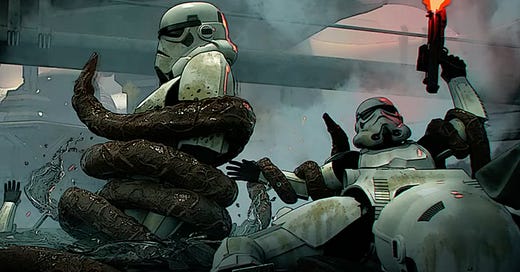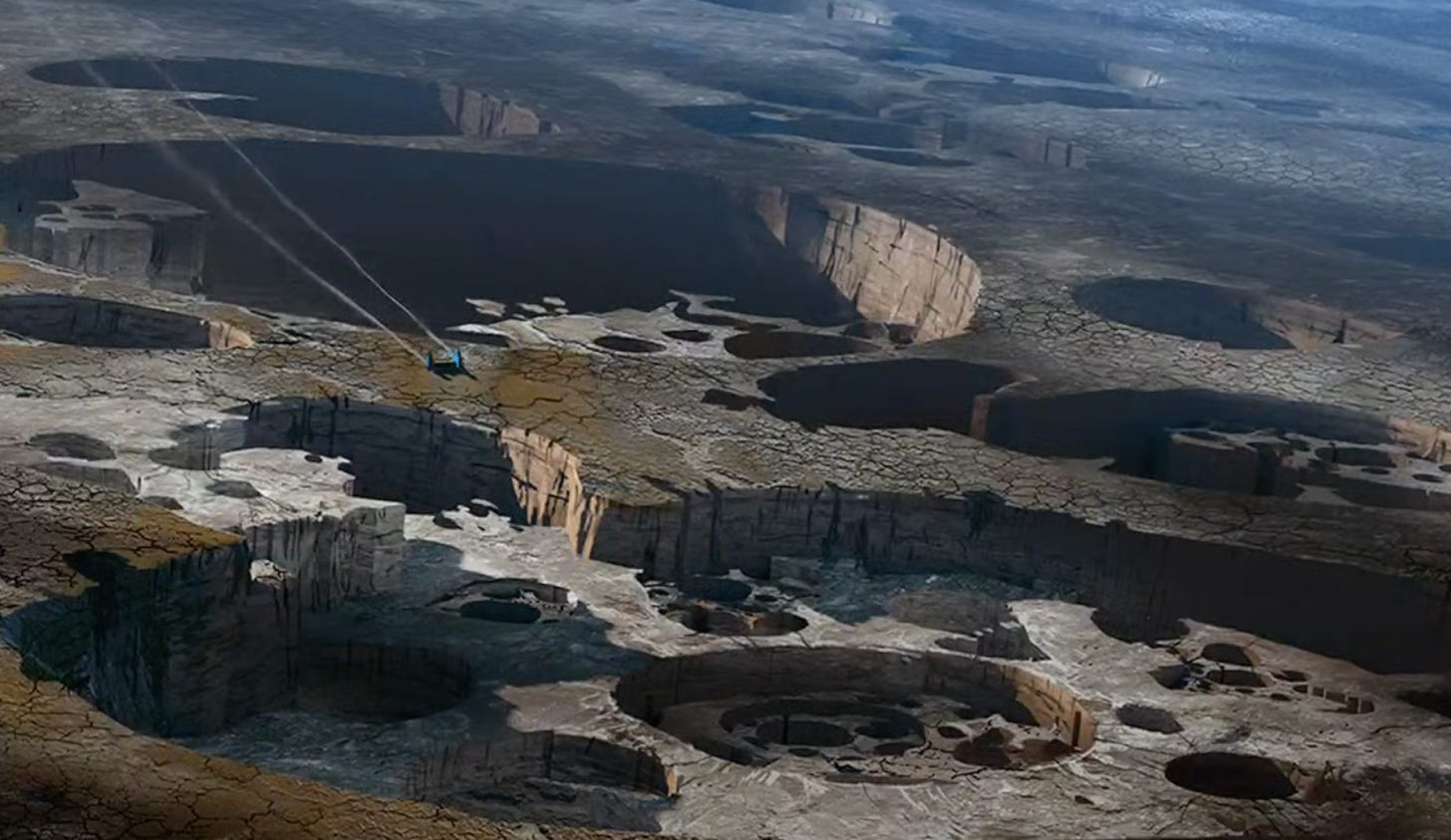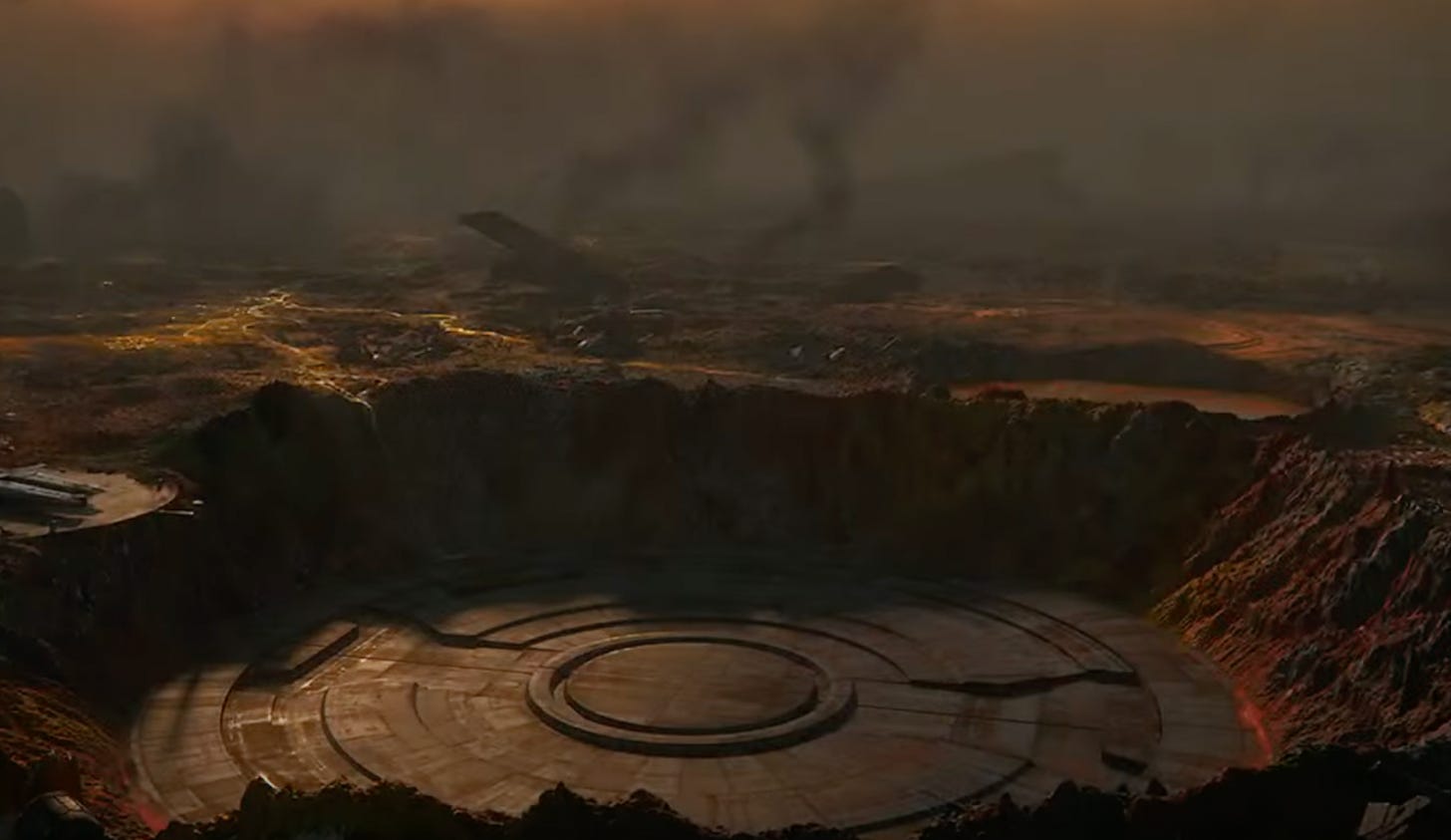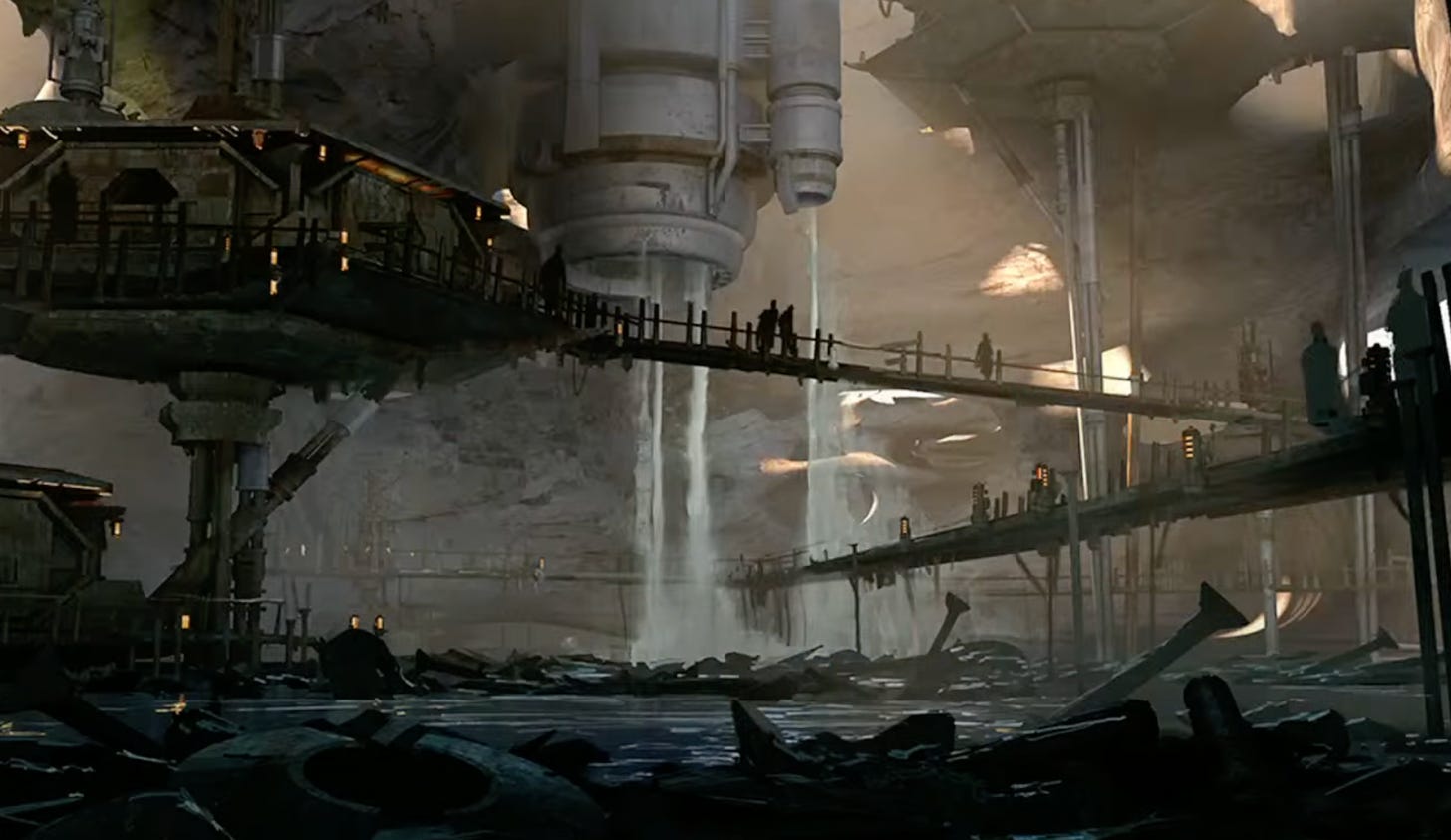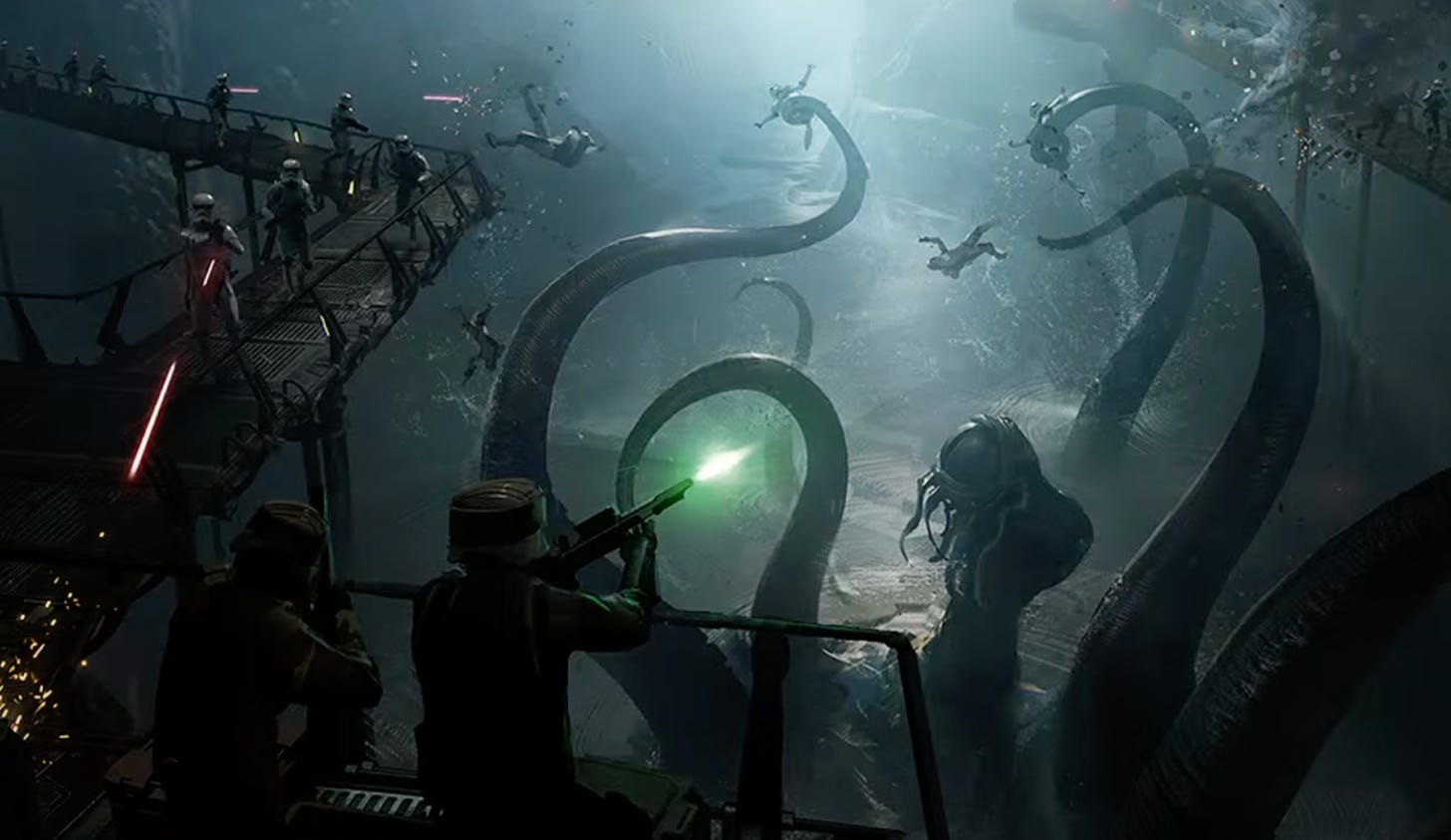A Trash Compactor on Jabiim: In an Alternative Version of Obi-Wan Kenobi, a Hungry Dianoga Would Have Feasted on Stormtroopers
The attack on Jabiim in Obi-Wan Kenobi could have been very different. At Star Wars Celebration, Doug Chiang revealed the concept art and inspirations behind the hidden Jedi sanctuary.
The Obi-Wan Kenobi series was in development for a very long time. In fact, before it was a series, there were plans for a film directed by Stephen Daldry and written by Hossein Amini. But the project was changing over time. And change is part of the daily process of creating a Star Wars film or series. That’s one of the lessons from Star Wars Celebration when Vice President and Executive Creative Director of Lucasfilm Doug Chiang took the stage and talked about the making of Obi-Wan Kenobi.
Concept art informs the writing and vice versa. That’s one of the key understandings of how Lucasfilm works. Sometimes the screenwriters and directors come to the art department with a concrete idea, sometimes the art department creates a visual that inspires the filmmaking. Everything is in motion, and so was Jabiim, the desolate Planet in the Outer Rim we get to know in the second half of the series. Jabiim is a sanctuary for those who are hiding from the Empire, especially Jedi and other Force-sensitive inhabitants of the galaxy.
But Jabiim isn’t a place to calm down. Or how Chiang puts it:
We wanted to create a desolate planet for our Jedi refugees. Some place inhospitable. This was one of the initial concepts, set on a remote volcanic planet. The surface is pocketed with sinkholes from old volcanoes and lava tunnels.
To increase the dramatic effect of the surroundings, Jabiim had to become even more unwieldy.
We decided to make the planet more toxic and more unpleasant by turning it into a galactic dumping ground for trash. We kept the concept of the craters and moved the refugees underground to be protected under these giant shield doors. This became our homage to the villain’s lair in James Bond: You Only Live Twice, designed by the legendary Sir Ken Adams.
When you design a film or a series, Ken Adam is always a good call. From James Bond to Dr. Strangelove, his work is as iconic as it is engaging. Just one look and you immediately get the feel of a room, a place or a location. But the true genius is that you can get lost there for hours. For Obi-Wan Kenobi, Chiang’s team created a sanitation station that feels like a hidden world just waiting to be explored.
At this stage in the process Jaibim was conceived of as a sanitation station and we thought, well, those refugees must be sanitation workers. So the buildings were all built up high on stills to keep them above the sludge pools below.
At this point, Chiang references another inspiration: the first Star Wars. When Luke, Leia and Han are trying to escape the Death Star, they jump headfirst into the trash compactor connected to Detention Block AA-23, home of a slippery, creepy monster: The Dianoga.
We thought if this is like a trash compactor scene from the Death Star how about a giant Dianoga too? Maybe the refugees had a pet Dianoga here for protection. In this painting by Andrée Wallin the refugees set the Dianoga loose on the troopers. These early explorations are always super fun to do. We like pitching wild ideas in case something like this sticks.
In this case, the idea was not picked up in the script, which is a shame because the lovecraftian concept art really looks cool. In the end, it has to work in terms of the bigger picture. The image above is not just a brief scene you can edit in and out as you want. It’s part of a whole set piece that must be planned on so many different levels. But that's what makes concept art so intriguing: It gives us an insight into the many turns a production can take. Creating a movie is a complex process, and few things exemplify this quite like concept art.
You can follow Doug’s work on Instagram and ArtStation.
Image credit: Lucasfilm

